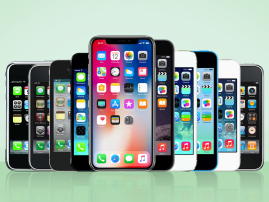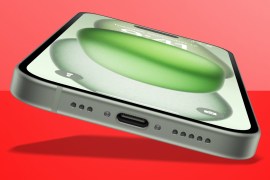Bad Apples – six of Apple’s greatest blunders
Apple's celebrating another year of record revenue and over 500 million iOS devices sold – but there have been a few missteps along the way
With another year of record revenue and over 500 million iOS devices sold, it seems that Apple can do no wrong. But not everything Cupertino touches turns to gold – we’ve taken a trip down memory lane to take a look at a few iProducts that didn’t fare so well. Remember any of these rotten Apples?
Apple Pippin (1995)
Thinking Hobbits? Think again. The Pippin was the result of a collaboration between Apple and Bandai way back in 1995 – the aim was to create a console-cum-computer hybrid, with easily accessible CD gaming features. The reality, however, saw the under-powered and over-priced Pippin fall at the hands of the PlayStation, Sega Saturn and Nintendo 64 – a powerful trio of gaming foes.
Apple iMac mouse (1998)
The “hockey puck” mouse packaged with the original iMac was certainly eye-catching, with its bright colour scheme and unusual design. Curiosity soon turned to frustration for users, when it became clear that the mouse’s small size and odd shape made it a nightmare to grasp comfortably. The only people sad to see it go were RSI specialists, who presumably made a good living from fixing the resulting misshapen claws that used to be users’ hands.
Apple Maps (2012)
Apple ditched Google in 2012 and treated iOS 6 users to its very own mapping service. But things rapidly turned sour, with users quickly realising that the app was riddled with flaws – from misplaced towns to roads and bridges that tailed off into nowhere. The debacle eventually prompted an unprecedented apology from CEO Tim Cook. Fortunately, Google has recently released its own Google Maps application to end the suffering of iPhone users.
Apple Newton MessagePad (1993)
Apple’s Newton was nothing if not forward-thinking – years before the iPad, this personal digital assistant promised to revolutionise users’ lives. “Promised” being the operative word – by the time it was released, two years after it was announced, it couldn’t hope to live up to expectations. Its ropey handwriting recognition and glacially slow performance didn’t help matters, and within five years the Newton was axed. Nearly a decade later, Apple finally realised the promise of the Newton with the launch of the iPhone, and the rest is history.
Apple Twentieth Anniversary Macintosh (1997)
The Twentieth Anniversary Mac cost US$7,500. Seven. And a half. Thousand. Dollars. Sure it looked pretty – but at over five thousand dollars more than comparable machines, it’s no wonder it failed. Early adopters were satiated with free high-end PowerBooks after prices were slashed down to US$2,000. And rightfully so, we think you’ll agree.
Apple QuickTake (1994)
One of the very first digital cameras, the Apple QuickTake packed a whopping 0.3MP Sensor and a gargantuan 8 photo capacity memory. Big, clunky and just not that great, Apple wisely chose to leave digital snappers to the likes of Kodak, Fujifilm, Canon and Nikon.
Stuff Office Cat’s Diary – 25/01/13



